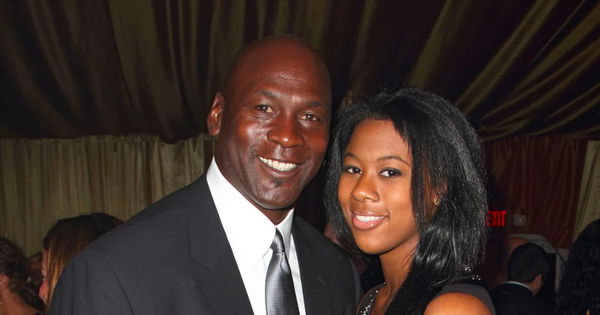
Imago
Image Credits: Imago

Imago
Image Credits: Imago
Women athletes are finally getting their moment, and the 2025 WNBA Draft proved it—pulling in 1.25 million viewers on ESPN and peaking at 1.46 million, only the second draft ever to top a million! By mid-July, TV ratings were already up 23% from last year, showing fans are truly paying attention and appreciating their talent. This isn’t just about basketball—it’s a sign that women athletes are being recognized seriously, for their skills and their worth. And guess who called this rise? The Jordan Brand.
Back in September 1997, Nike officially launched the Jordan Brand, and Michael Jordan handpicked a group of rising NBA stars to form “Team Jordan.” The roster included five men. By 1998, the brand was expanding, releasing its first women’s sneaker, designed by Nike’s first African American footwear designer, Wilson Smith III, called the Women’s Air Jordan. It wasn’t until 2011, however, that Jordan Brand truly embraced women’s basketball, signing Maya Moore as its first female face. Today, the Jordan Brand boasts a roster of 13 WNBA players, with the latest addition being
Napheesa Collier.In a Forbes interview,
Jasmine Jordan, daughter of Michael Jordan, and the force behind Jordan Brand’s early NIL push for women athletes, sent a strong message: “We stopped looking for the validation, we stopped looking for the approval. I’m going to stand here. I want to play this game because I want to. And if you watch me, good for you.” She explained how taking control of the narrative mirrors today’s women athletes—remember the WNBA players rocking “Pay Us What You Owe Us” tees? They’re claiming their value, and that’s exactly what made Jasmine spot untapped business opportunities.ADVERTISEMENT

Jasmine,
who recently stepped in for Michael Jordan at a NASCAR race, made it clear: “You either have to allow us to pave the way or you got to move out of our way,” she said. “[And] that’s going to continue to grow.” She believes this boldness fuels the rise of women’s sports, when athletes step up and claim their space, fans respond, and as the business side grows, players gain even more control to shape their own careers.
And the numbers back her up. As of late 2024, LSU gymnast Livvy Dunne is leading women’s NIL valuations at $4 million, with 13.6 million social media followers and around $9.5 million in total NIL earnings. LSU basketball star Flau’jae Johnson holds a $1.5 million valuation with 3.7 million followers, while UConn’s Paige Bueckers sits at $1.4 million with 5.1 million followers. These stats show women athletes are not just claiming their space—they’re owning it. Social media authenticity drives engagement, which in turn makes brands take notice. And for women facing limited pro opportunities—just 144 WNBA roster spots across 12 teams—NIL deals are providing a real chance to turn college success into long-term business opportunities.
Investment in women’s sports is also booming. The 2024 NCAA women’s basketball championship between Iowa and South Carolina pulled in 18.9 million viewers, setting an ESPN record. Investors are starting to see the bigger picture: Denver paid a record $110 million expansion fee to enter the NWSL in early 2025—more than double what Boston and Bay FC paid two years earlier. The WNBA is growing too, with Toronto and Portland joining in 2026, raising the league to 15 teams with plans to reach 16 by 2028. As Jasmine Jordan puts it, the shift from charity case to business case is “an economic reality,” and long-term thinking is finally driving investment in women’s sports.
The five rising stars powering Jordan Brand’s women’s NIL roster
Jordan Brand has been quietly building a powerhouse roster of women’s basketball talent, and it all started in 2022 with a historic deal. That year, UCLA guard Kiki Rice became the first-ever NIL signing for the brand, and the fact that their first pick was a women’s player was not a coincidence. “Being Jordan Brand’s first NIL athlete is an incredible milestone,” Rice said at the time. At just 18, she was already living the sneaker dream, with her own custom colorway of the Heir Series. The next big move came when LSU’s Mikaylah Williams joined the family, becoming the second women’s college basketball player—and third athlete overall—to sign with the brand. “Signing with Jordan Brand allows me to inspire young girls and contribute to the growth of women’s basketball,” she said.
Before Williams, there was Rutgers commit Kiyomi McMiller, who made history as the first high school athlete to sign an NIL deal with Jordan Brand—she was the second overall signing after Rice, but the first from the prep level. From there, the roster kept growing. Bella Hines, a 5-star scoring guard from Albuquerque and LSU commit, became the fourth addition. Her signing was a big one, as she not only inked with LSU but also announced a multi-year partnership with Jordan Brand on the same day. “Where I’m from, not a lot of people have this opportunity, so I feel like I bring hunger and grind,” Hines said, adding that she brings a “different type of spice to Jordan.”
That brings us to July 2025, when Jordan Brand welcomed its latest star—Saniyah Hall. The Montverde junior, who’s already on the radar of powerhouses like USC, South Carolina, North Carolina, Ohio State, and Michigan State, averaged 20.3 points and 6.7 rebounds last season. The announcement came via a slick Instagram collab post, where Hall made her philosophy clear: “I don’t have anything to prove… I let my game do the talking. Actions speak for themselves.” From Rice to Hall, Jordan Brand’s women’s NIL roster isn’t just impressive, it’s shaping the future of basketball, one signing at a time.
ADVERTISEMENT
ADVERTISEMENT
ADVERTISEMENT
ADVERTISEMENT
ADVERTISEMENT

